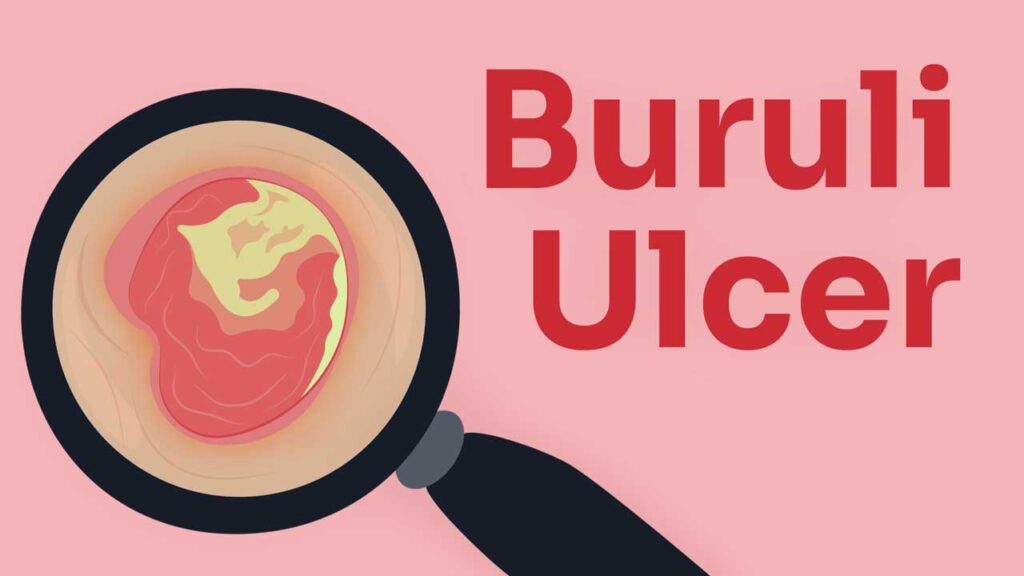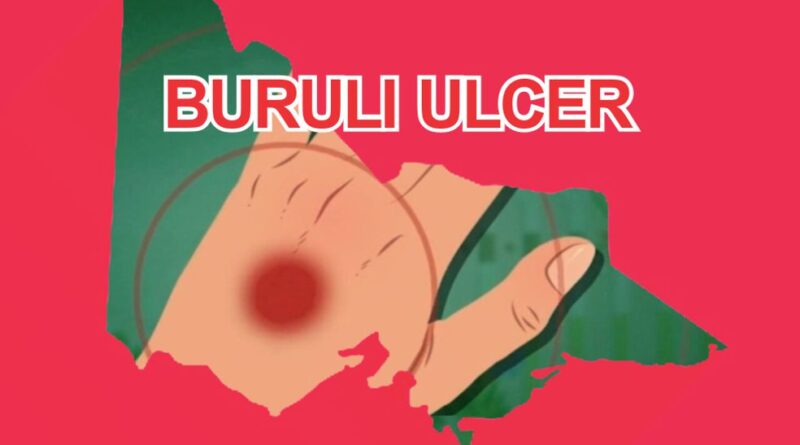Urgent Warning: Buruli Ulcer is spreading in Melbourne, Geelong
Victorian Health authorities have issued a urgent warning over a bacterial skin infection which can initially be mistaken for an insect bite, after a rise in cases in metropolitan Melbourne and regional areas.
Victoria had recorded more than 238 cases by October 2, compared to 207 cases for the same time period last year, 197 for 2021 and 135 for 2020. This represents a jump of more than 70 per cent since 2020.

Key messages
- Buruli ulcer is a bacterial skin infection.
- Lesions typically present as a slowly enlarging painless lump or wound which can initially be mistaken for an insect bite.
- Case numbers so far this year are higher compared to previous years.
- The disease is spreading geographically across Victoria and is no longer restricted to specific coastal locations. Most recently, there has been an increase in cases linked to several suburbs in Greater Geelong and the inner north and west of Melbourne.
- The highest risk for infection occurs during the warmer months, but it usually takes between 4-5 months for an ulcer to develop following infection.
- Early recognition and diagnosis are critical to prevent skin and tissue loss – consider the diagnosis in patients with a persistent ulcer, nodule, papule, or oedema and cellulitis not responding to usual treatments, especially on exposed parts of the body.
- Public health laboratory testing for Buruli ulcer is free for patients. A handling fee may be charged by private pathology companies.
- Buruli ulcer must be notified to the Department within five days of diagnosis.
- There is increasing evidence that mosquito bites and possums play a role in disease transmission in Victoria.
- Prevention measures include avoiding mosquito bites, reducing mosquito breeding sites, covering cuts and abrasions when outdoors and washing any soil or water off your skin following outdoor activities.
What is the issue?
Buruli ulcer is a skin infection caused by the bacterium Mycobacterium ulcerans (M. ulcerans). Patients usually develop a painless lump or wound (known as a nodule or papule) which can initially be mistaken for an insect bite. Over time the lesion can slowly progress to develop into a destructive skin ulcer which is known as Buruli or Bairnsdale ulcer.
Cases of Buruli ulcer are increasing. As of 2 October, there have been 238 cases notified so far in 2023 compared to the same time in 2022 (207 cases), 2021 (197 cases), and 2020 (135 cases).
There are many areas where the disease has been found. These include:
- Mornington Peninsula region
- Bellarine Peninsula region
- Westernport region
- Frankston/Langwarrin region
- South Eastern Bayside suburbs
- East Gippsland
- Phillip Island (particularly Cowes), although much less common now
- Aireys Inlet and the Surf Coast
- Several suburbs of Greater Geelong, in particular Belmont, Highton, Newtown, Wandana Heights, Grovedale and Marshall
- Inner Melbourne suburbs of Essendon, Moonee Ponds, Brunswick West, Pascoe Vale South and Strathmore
The disease is not transmissible from person to person, however there is increasing evidence that both mosquitoes and possums play a role in disease transmission in Victoria. The bacterium that causes the ulcer is found in possum excrement.
Household members of people with Buruli ulcer should self-monitor for any non-healing skin lesions and seek early medical assessment as they may have been exposed to the same environmental source.
Who is at risk?
Everyone is susceptible to infection. Disease can occur at any age, but Buruli ulcer notifications are highest in people aged 60 years and above in Victoria. The risk of contracting Buruli ulcer, however, is still considered low.
Symptoms
When recognised early, diagnostic testing is straightforward. If guidelines are followed, prompt treatment can significantly reduce skin loss and tissue damage, as well as lead to more simplified treatment.
The incubation period varies from four weeks to nine months, with an average of four to five months. The lesion of Buruli ulcer may occur anywhere on the body, but it is most common on exposed areas of the limbs. In one or two months the lesion may ulcerate, forming a characteristic ulcer. Some people initially develop a painful lump, limb swelling (oedema) or cellulitis without an ulcer. Occasionally people develop severe pain and fever.
In patients with a lesion or cellulitis that does not respond as expected to usual antibiotics, the diagnosis of Buruli ulcer should be considered, especially in those with reported exposure to an endemic area.
Recommendations
Preventive measures
Preventive measures include:
- Avoid mosquito bites by:
- Using personal insect repellents containing diethyltoluamide (DEET) or picaridin
- Covering up by wearing long, loose-fitting, light-coloured clothing
- Avoiding mosquito-prone areas and vector biting times, especially at dusk and dawn.
- Reduce mosquito breeding sites around houses and other accommodation by reducing areas where water can pool (including pot plant containers, buckets, open tins or cans, discarded tyres, and other untreated, freshwater pools).
- Mosquito proof your home by securing insect screens on accommodation.
- When gardening, working or spending time outdoors:
- Wear gardening gloves, long sleeved shirts and trousers
- Wear insect repellent on any exposed skin
- Protect cuts and abrasions with a dressing
- Promptly wash any new scratches or cuts you receive with soap and apply a topical antiseptic and dressing.
- Exposed skin contaminated by soil or water should be washed following outdoor activities.
More detailed advice on how to prevent mosquito bites and other tips can be found at on the Better Health Channel
Early recognition, diagnosis and treatment can prevent serious complications from the ulcer. It is important to remember: The presence of skin lesions that progress rather than heal over weeks to months, should be assessed by a doctor and tested for Buruli ulcer. (Dept of Health VIC)



